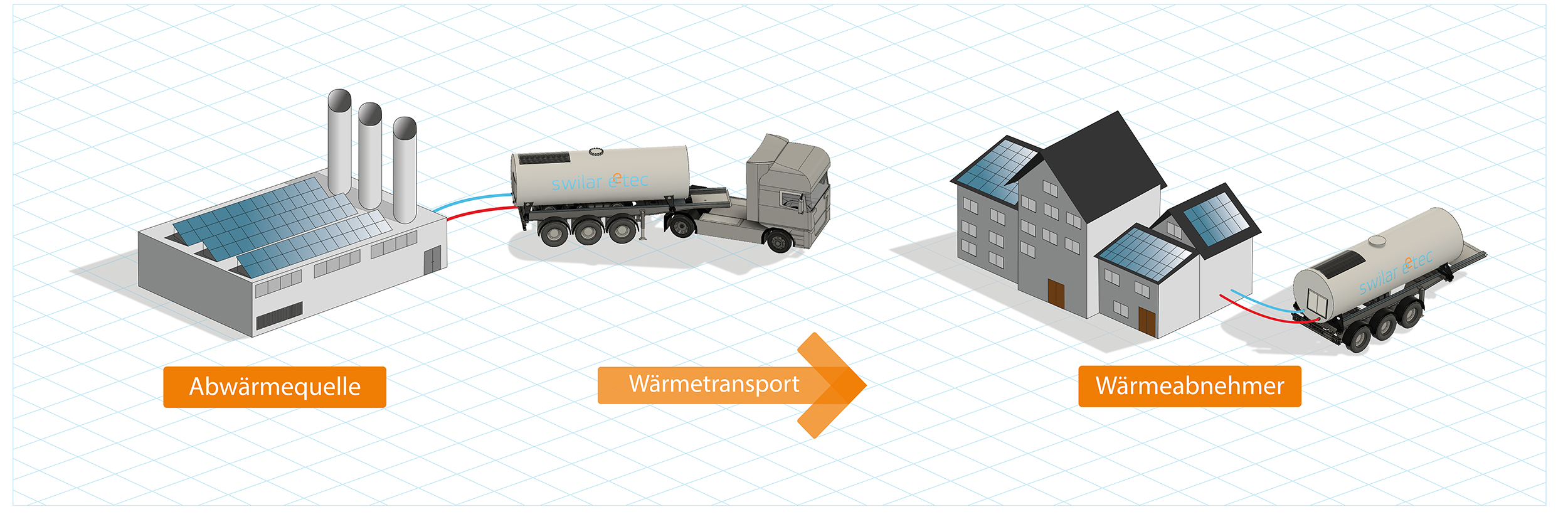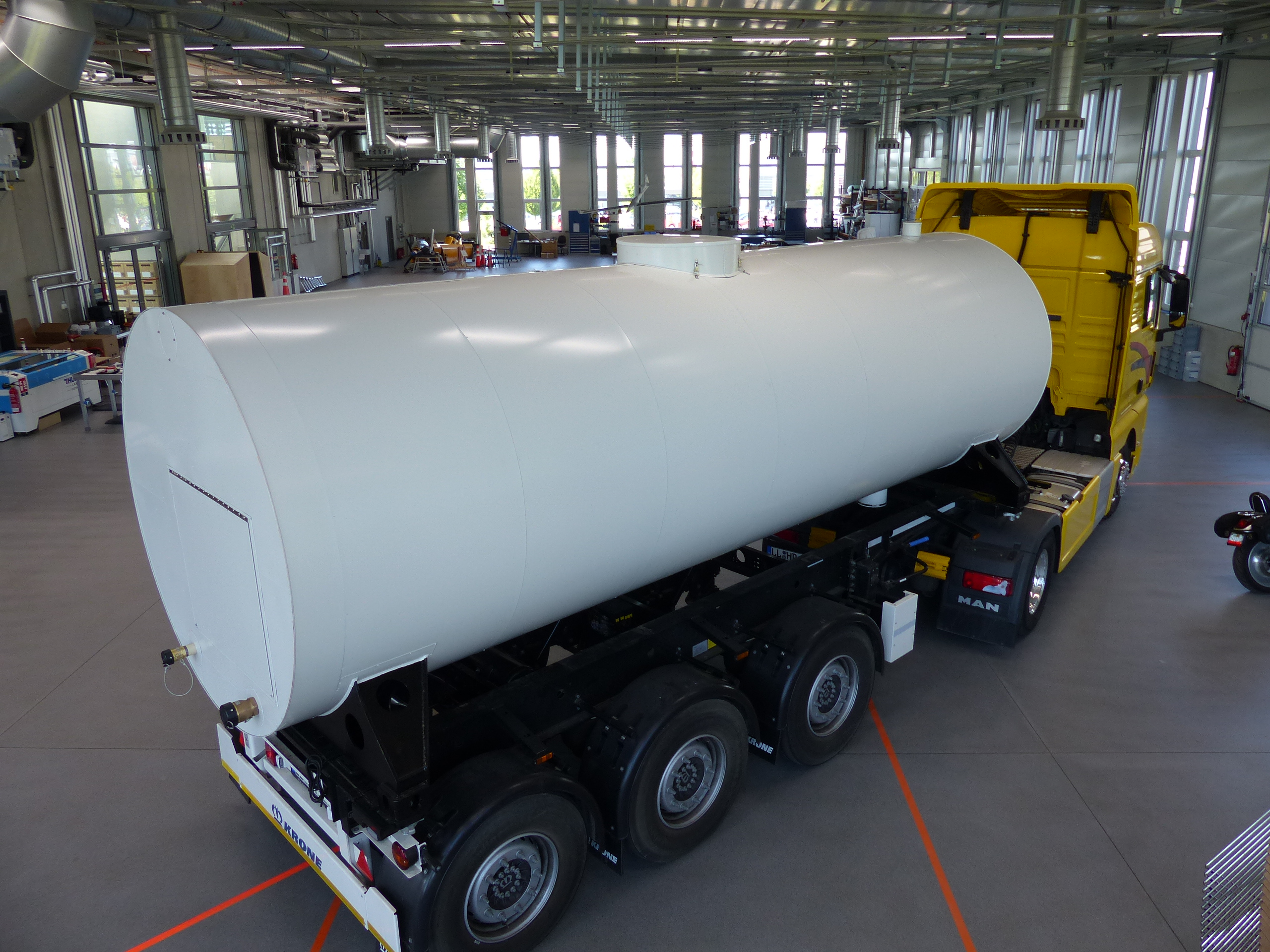Basic principle of mobile heat transport

The Benefits of mobile Heat transport for…
Municipal amenities:
Heat sources:
Heat consumer:
Checklist: When is the implementation of our mobile heat accumulator ingenious?
There are unused heat sources with a heating capacity of at least 300 kW and temperatures over 85 °C in the area.
CHP plants, biogas plants, waste recycling, sewage treatment plants, industry or else.
Possible heat consumers are at the maximum of 15 km distance from the possible heat source and need more than 700 MWh capacity per year.
Schools, nursing homes, swimming pools, Hotels, quarters, drying plants, industry or else.
The mobile heat transport is a great alternative, if there is no district heating network up for use and one can’t be developed economically.
The development of district heating networks can be supported with the usage of mobile heat transport.
The mobile heat transport can feed the waste heat of remote heat sources into a district heating network.
There is a high willingness in public administration to realise energy efficiency concepts, to meet climate change goals and to develop suitable solutions.
mobile Heat transport
For an economical appropriate use of waste heat with a mobile heat waste storge unit the system must be able to provide as much heat as possible in short amounts of time. A Truck with a maximum total weight of 40 to can only carry a limited amount of hot carrier media. To maximize this and to simultaneously optimise the heating capacity was one of many tasks during the development of the heat storage units.
A high heat capacity level is achieved by using sodium acetate trihydrate. The salt in aqueous solution is considered a „latent heat medium“ with a phase change transition at 58 °C. A great deal of energy is released during the transition from liquid solution to solid medium. This effect, which is well known from small pocket warmers, is used here on a very large scale.
The core of the storage unit is a specially developed, highly effective tubular heat exchanger made of stainless steel. No standard components were used here.
A heat accumulator from the current product range can absorb around 2.5 MWh of waste heat when fully loaded and deliver it to a heat sink. For charging / discharging, 8 hours each time need be planned in.



